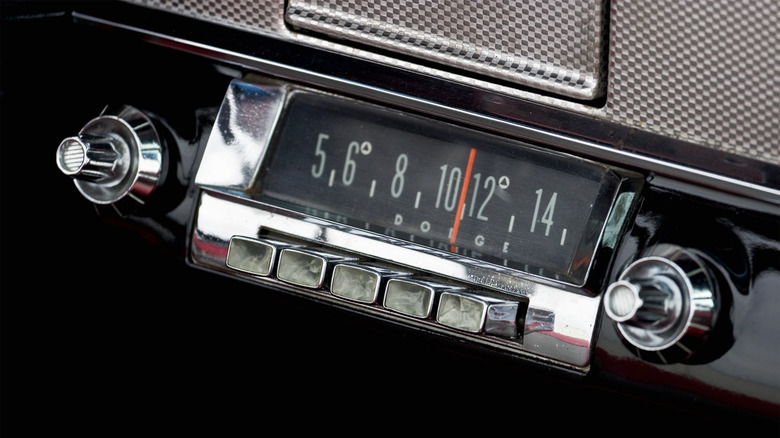Do EVs Spell Doom For AM Radio?
As of 2020, there were nearly 15,500 terrestrial radio stations in the U.S. (per Statista), with over 6,000 in the amplitude modulation (AM) band (via Electronic Design). Despite living in a high-tech world filled with streaming radio, podcasts, and in-car apps like Spotify, more than 244 million Americans listen to radio the good old-fashioned way, according to News Generation. With 92% of Americans listening, radio has a higher reach than TV (87% of Americans), PCs (54%), or smartphones (81%). Nearly 50 million people (20% of listeners) still tune in to AM radio (per The New York Times).
Meanwhile, electric vehicles (EVs) continue to rapidly grow. Sales between 2020 and 2021 grew by 85%, according to the U.S. Department of Energy. The first quarter of 2022 saw a 60% jump in EV registration (via Car and Driver). The electric vehicle market in the U.S. is expected to expand exponentially over the next six years, going from $28.24 billion in 2021 to $137.43 billion in 2028 (per Fortune Business Insights). This growth may very well spell doom for AM radio stations in America, however.
Knowing how radio signals are sent through the air is essential to understanding how electric cars can screw them up. Both AM and FM (frequency modulation) signals are sent in the form of electromagnetic waves, but the way they're sent is different, according to Diffen. AM modulates the amplitude of the signal while the frequency remains constant. FM adjusts the wave's frequency, but the amplitude is kept constant.
The signal to noise ratio is simply not acceptable
FM signals operate at a higher bandwidth and sound better, but physical barriers can easily impede the signal. On the flip side, AM operates at lower bandwidth and typically sounds like the inside of a tin can. However, it's cheaper and can transmit much further than FM signals (via Diffen). During the day, AM signals use groundwave propagation to move across the Earth's surface and can travel about 100 miles from the broadcast station (via FCC). At night though, things change dramatically. AM signals reflect off the earth's ionosphere and back down to the ground, an effect known as skywave propagation, which allows the signal to travel hundreds or even thousands of miles.
Here's the problem: Any object powered by electricity puts off electromagnetic (EM) noise. This noise is the enemy of AM radio because it interferes with the signal. EVs, being powered by electricity, put out a ton of EM noise, severely degrading any incoming AM signals.
Several EV makers like BMW, Tesla, Audi, Porsche, and Volvo completely eliminated the AM radio option from their vehicles (per The New York Times). BMW flat-out stated it didn't want to "frustrate customers with inferior reception and noise." Volkswagen didn't include AM in its ID.4 SUV, and Ford is dropping it from the 2023 F-150 Lightning. With the AM band all but dismantled in Europe (via RadioInfo Australia), it's probably only a matter of time before AM radio goes the way of dinosaurs.

